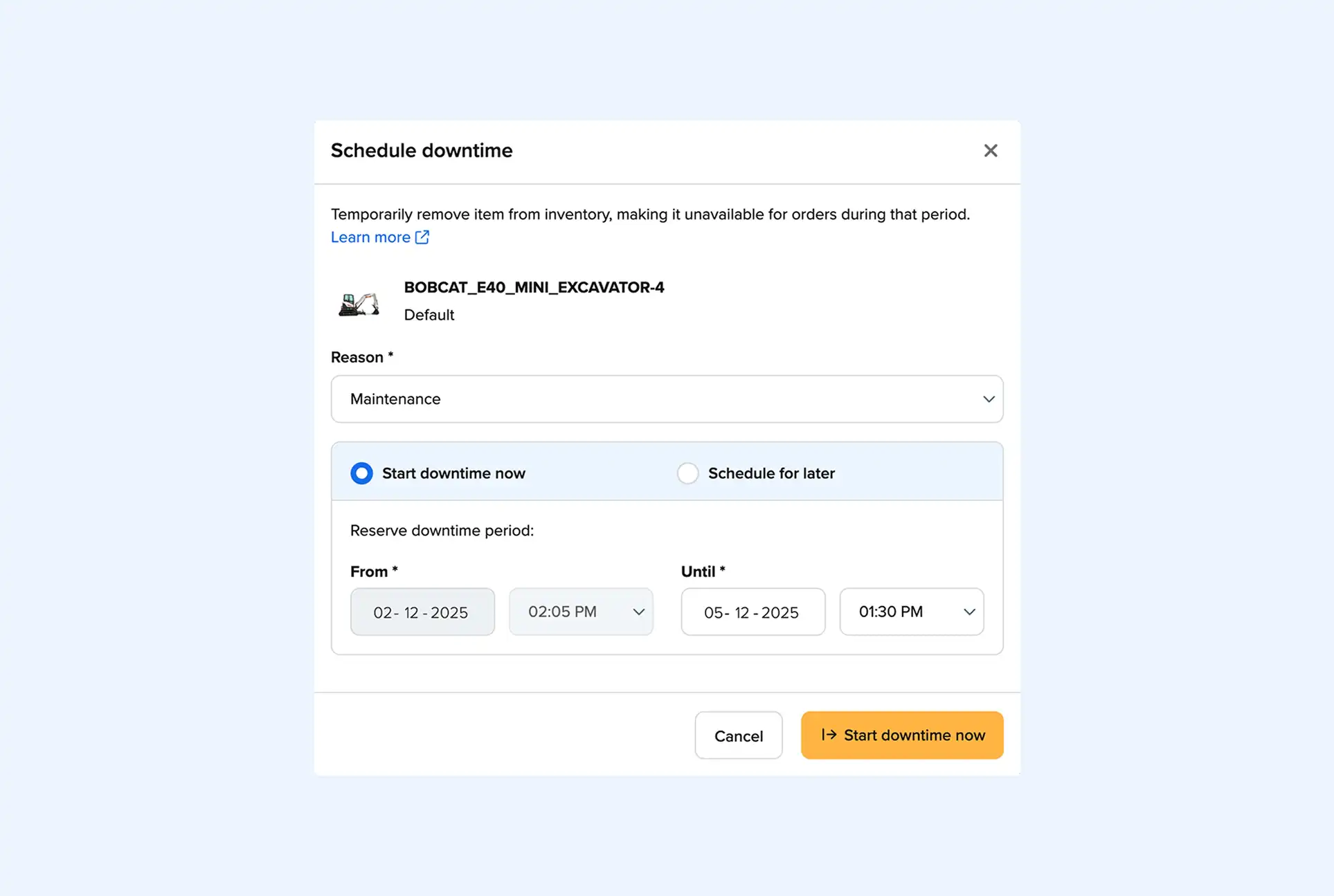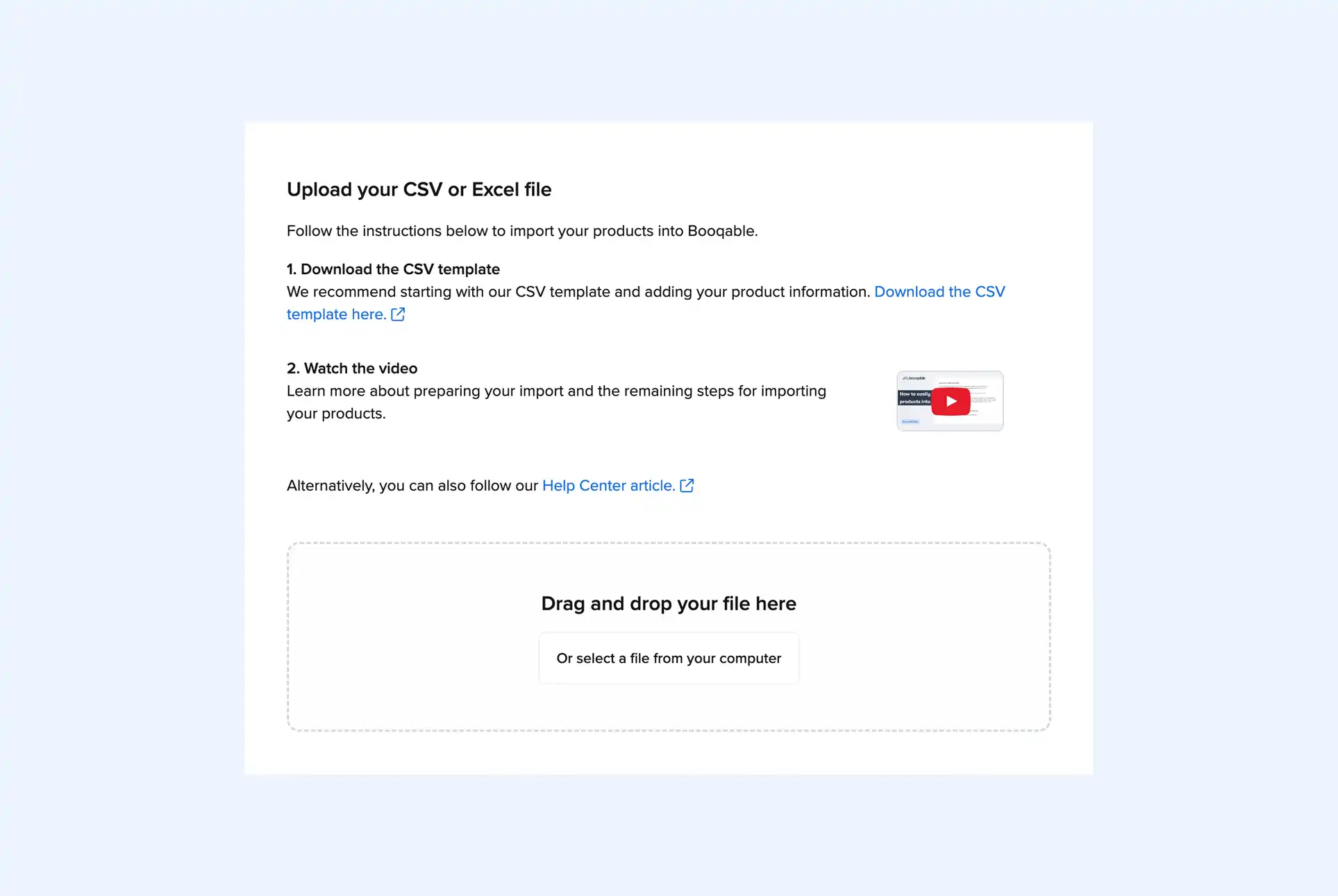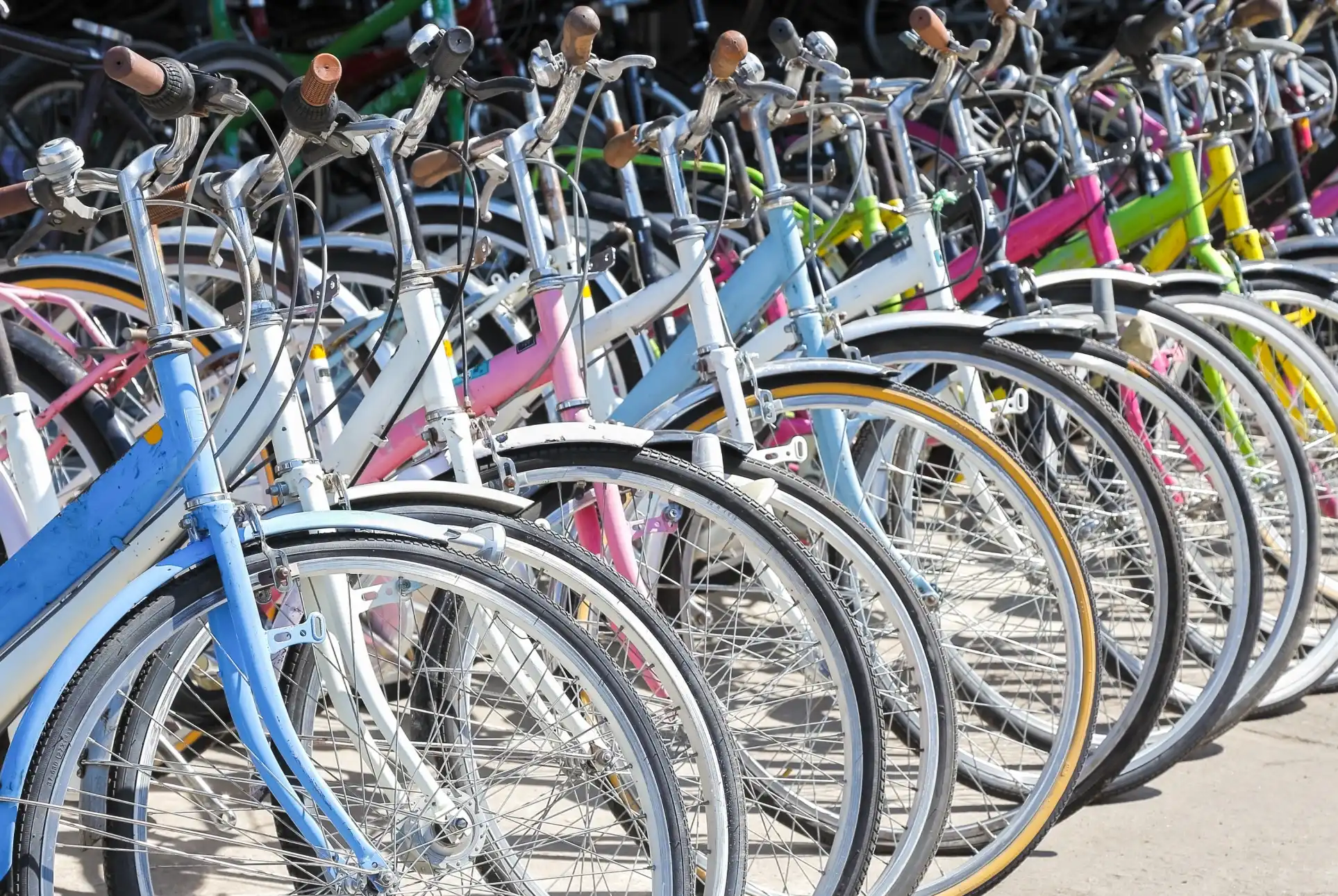In the world of rentals, knowing how to track rental equipment and inventory at any given moment can make or break your business. Without proper tracking, you risk double bookings, lost items, and unhappy customers.
This guide covers practical ways to track rental equipment effectively and manage your rental inventory efficiently, ensuring your business runs smoothly. You’ll find step-by-step instructions, templates, and real examples you can use today.
Why tracking rental equipment and inventory matters
Tracking rental inventory effectively helps your business in several ways:
1. Prevent double bookings and enhance availability
Ensuring items are available when customers need them is crucial. When a customer books a camera for Saturday, you need to know immediately whether one is available. Without proper tracking, you’ll deal with angry customers who arrive to find their equipment has been double-booked or is missing. Proper systems help you track rental equipment in real-time and avoid these conflicts.
2. Reduce losses and boost security
The rental industry typically loses 3-5% of inventory value annually through theft, damage, and misplacement. Businesses with strong tracking systems cut this to less than 1%. When your average item costs $500, that difference adds up fast. Using rental inventory management software significantly reduces these losses by keeping a digital footprint of every transaction.
3. Improve maintenance and longevity
Tracking rental equipment not only informs you of item locations, it also helps you track rental inventory usage patterns, identify wear and tear early, and schedule preventive maintenance to extend the life of your assets. Digital solutions provide automated reminders for servicing, ensuring nothing falls through the cracks.
4. Gain financial clarity and smarter investment decisions
Accurate rental inventory tracking helps you identify which items generate the most profit, which sit idle too often, and where you should invest next. This data transforms guesswork into strategic decisions, allowing you to optimize stock and eliminate waste.
Start your rental business for just 29/month
Put your toes in the water and test the demand in your area with a rental website for just 29/month.
Simple and effective methods to track rental equipment
Effective rental inventory management starts with simple but reliable methods. Here are some proven techniques to help you keep your rental business organized and efficient.
Count your inventory regularly
Schedule regular rental inventory checks to ensure accurate tracking of what you have compared to your records.
How to do it right now:
- Set a specific day each week for quick counts and a full day each month for complete inventory
- Create a simple checklist with all items sorted by category
- Assign specific staff members to count sections
- Compare actual counts to your records immediately
For small businesses (under 200 items): Create a physical count sheet for each category with columns for expected quantity, actual quantity, condition notes, and action needed.
For medium businesses (200-1000 items): Use a tablet or smartphone with your inventory list loaded as a spreadsheet. Sort by location and category for efficient counting.
For large businesses (1000+ items): Consider cycle counting—count 20% of your inventory each week on a rotating schedule, focusing on high-value items more frequently.
Common counting mistakes to avoid: Counting without a system leads to missed items. Rushing through high-value equipment often results in errors. Failing to document discrepancies immediately makes problems harder to solve. Not checking storage areas where items might be misplaced means missing equipment that’s actually available.
Pro tip: Take photos of your storage areas when everything is properly put away. Use these as reference guides for staff to ensure consistent organization.
Choose the right tracking method
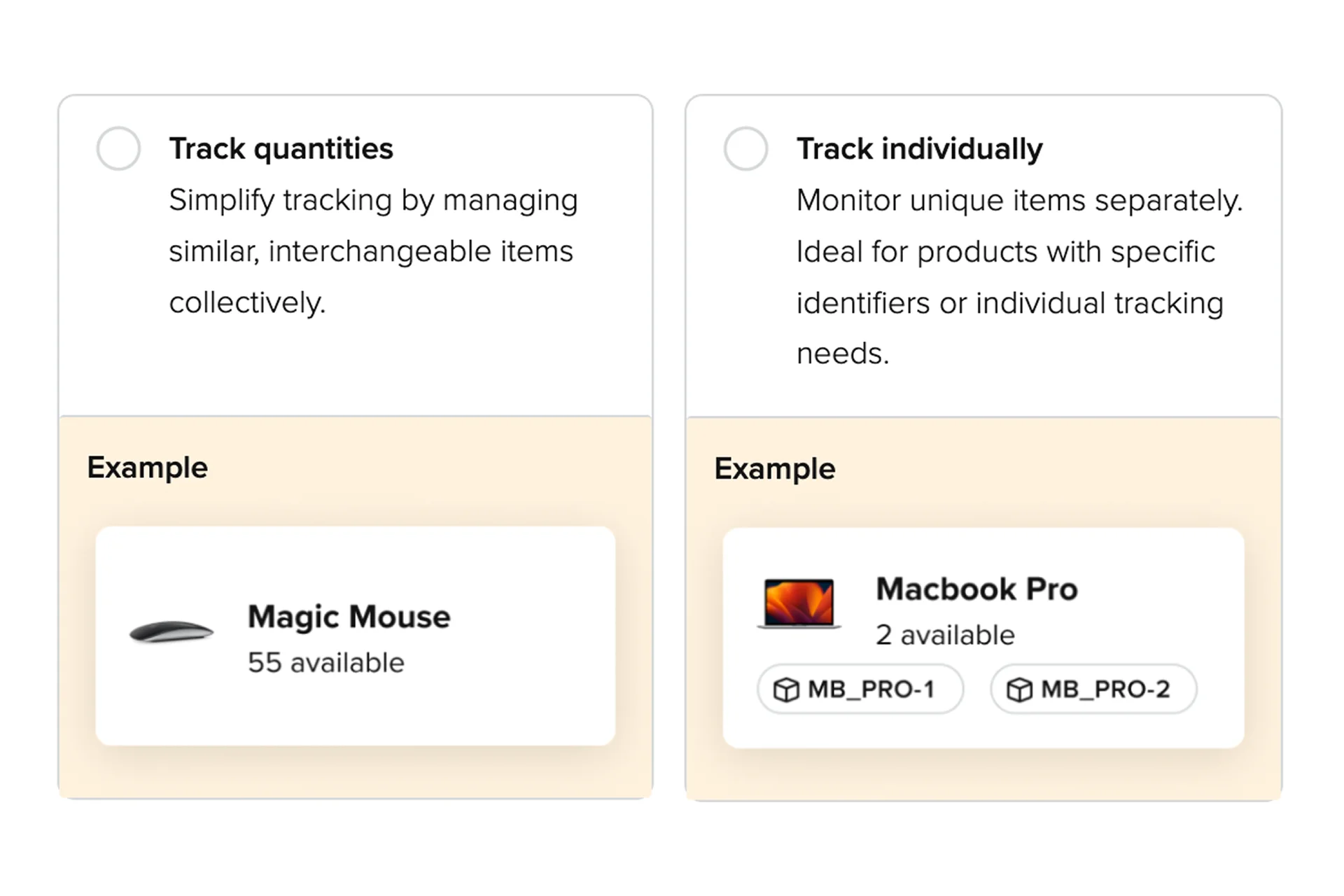
Not all rental items need the same tracking approach. Choose the right method based on item value, usage, and maintenance needs to optimize your rental inventory tracking.
Individual tracking: Use individual tracking for items worth over $100 or that require maintenance, such as cameras, drones, bikes, kayaks, projectors, and speakers. Assign unique ID numbers to each item and log it into your rental inventory management system.
What to track for individual items: Track the unique identifier (serial number or your own numbering system), purchase date and cost, current replacement value, rental history (who, when, condition before/after), current status (available, rented, or returned), and photos (updated when condition changes).
Bulk tracking: For low-value items that don’t need maintenance history, such as cables, tableware, linens, and basic tools, bulk tracking is more efficient. Track total quantity, not individual items.
What to track for bulk items: Keep records of total quantity owned, minimum quantity needed for operations, reorder threshold (when to purchase more), expected loss rate (to budget for replacements), storage location(s), and cleaning/processing requirements after return.
Component tracking: For items that have multiple pieces like sound systems, lighting rigs, and camera kits. Track the main item individually and its components as a checklist. You could even create bundles where the main item is tracked and the accessories are bulk.
For component tracking, create a “kit sheet” with photos of all pieces properly arranged. Use this during check-out and check-in to ensure nothing is missing.
Digital vs. physical tracking: Small operations can still track rental inventory successfully with paper-based systems if they’re diligent about updating records consistently. Medium to large operations nearly always need digital systems, like Booqable, to handle the complexity and prevent human error.
Tag everything
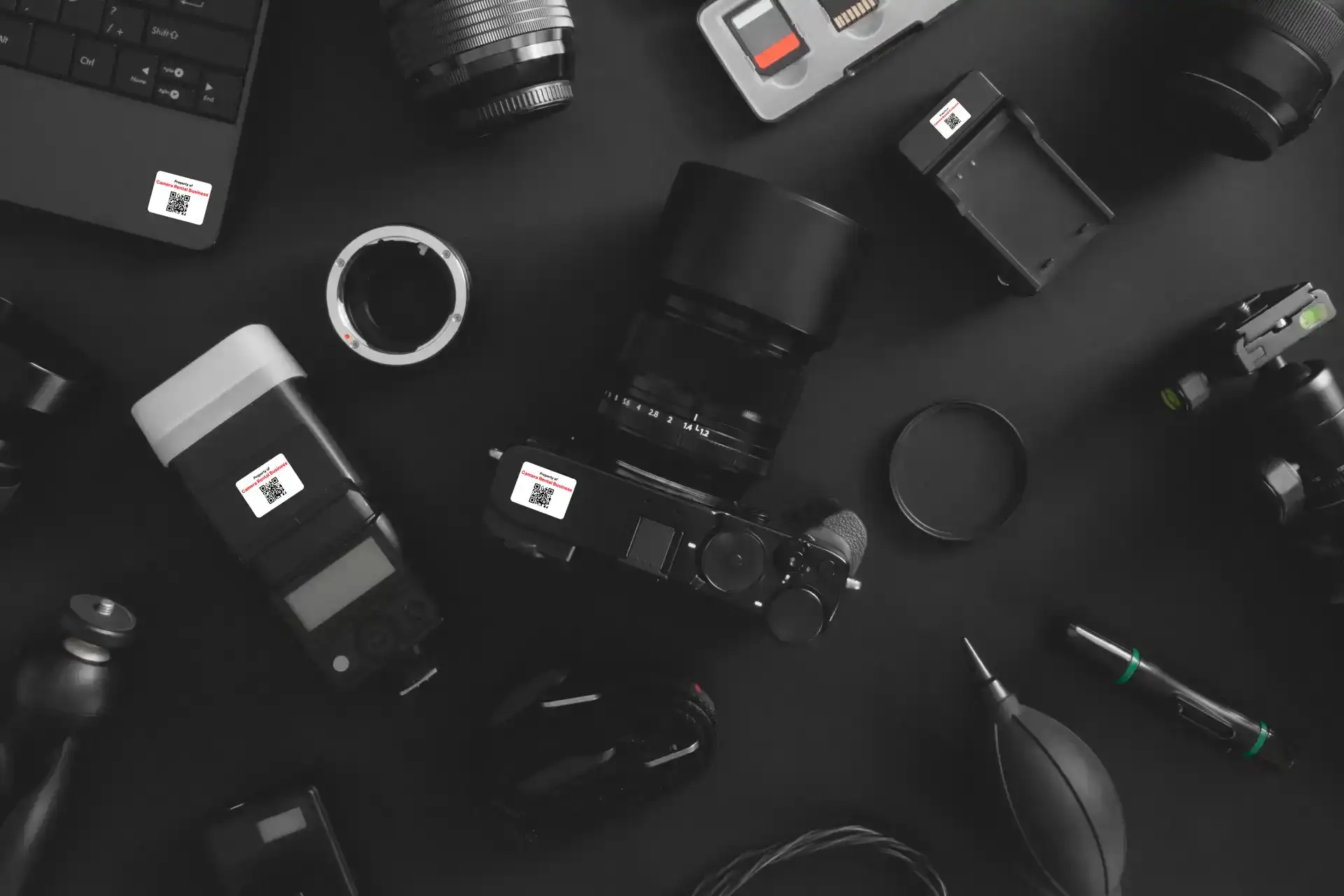
One of the simplest ways to track rental equipment efficiently is through proper labeling. Clear, consistent tags make it easy to identify items quickly, reducing the chance of misplacement or double bookings.
Quick-start labeling system:
- Create durable tags with weatherproof labels or engraving
- Include: Item name, ID number, your business phone number
- Place tags consistently in the same spot on similar equipment
- Add QR codes linking to equipment specs or return instructions
Choosing the right label type:
For outdoor/heavy-use equipment, use metal stamping or engraving and UV-resistant vinyl labels with laminate overlay. These cost $0.50-$2 per item, but are virtually permanent.
For electronics and delicate equipment, consider tamper-evident asset tags that break if removed or labels that leave “VOID” pattern when peeled. These typically cost $0.30-$1 per item.
For fabric items, sewn-in tags (similar to clothing labels) or heat-transfer labels work best, costing about $0.20-$0.75 per item.
Information to include on labels: Your company name, a unique ID number, phone number, return instructions (for smaller items), and website or QR code (for items with special handling needs).
Label placement: Place labels in consistent locations across similar items. Choose spots that are visible but won’t interfere with equipment use. For items with high theft risk, add both visible and hidden tags.
Start with building your rental website
Every new rental business starts with a website to get their first bookings.
Building your equipment inventory
To track rental equipment effectively, it’s crucial to have a well-structured and detailed inventory. This not only helps with real-time availability but also simplifies maintenance and financial forecasting.
Make a complete list
Create a simple catalog with all your rental items. This should include:
Extended inventory fields worth tracking: Manufacturer and model number, warranty information and expiration, supplier contact information, user manuals (digital links), compatible accessories, typical rental duration, seasonal demand patterns, insurance value, depreciation schedule for tax purposes, and current condition rating (1-5 scale).
How to collect data for existing inventory: Start with your 20 most frequently rented items and document them completely, including photos. Add 10 more items each week until complete. Set aside 2-3 hours per week dedicated solely to inventory documentation. Involve all staff in identifying items that might be missing from your records.
Taking proper inventory photos: Use a plain background and capture multiple angles. Include close-ups of model/serial numbers and document any existing damage or wear. Show the item both assembled and disassembled (if applicable) and include a ruler or other size reference in at least one photo.
Group and organize your rental inventory
Effective rental inventory management is not just about tracking, it’s also about organization. A well-structured inventory reduces time spent searching for items and minimizes errors during check-out and check-in.
Categorize your rental equipment
Organize your inventory into logical categories based on:
-
By Type: Audio equipment, lighting, furniture, decor.
-
By Event Type: Wedding, corporate, festival, production.
-
By Location: Warehouse A, Truck 2, Off-site storage
Implementing a physical organization system:
Zone system: Divide your storage area into clearly marked zones (A, B, C, etc.). Assign zones based on item type or rental frequency. Place high-demand items in easily accessible areas and mark zones with large, visible signs. Create a map of your zones for new staff training.
Color-coding system: Assign colors to different categories (blue tags for audio, yellow for lighting). Use colored shelving, bins, or tape to mark storage areas. Match colored tags on equipment to their designated storage areas and include color references in your inventory database.
Location coding system: Assign each storage location a unique code (e.g., A03B means Aisle A, Rack 3, Shelf B). Label each location with its code, include location codes in your inventory records, and update location whenever an item moves.
Optimization techniques for faster access
-
Store frequently rented items together near the loading area.
-
Keep items typically rented together near each other.
-
Position heavy items at waist height to prevent injuries.
-
Create dedicated areas for incoming returns and outgoing rentals.
-
Use clear bins for small items so contents are visible.
-
Take photos of properly organized areas and display them as visual standards.
Join thousands of rental business owners
In the last 12 months, hundreds of people have started their business with Booqable.
Track equipment more efficiently with technology
Modern technology has made it easier than ever to track rental equipment and manage rental inventory efficiently. Investing in the right tools can drastically improve your operations and minimize losses.
Use rental software
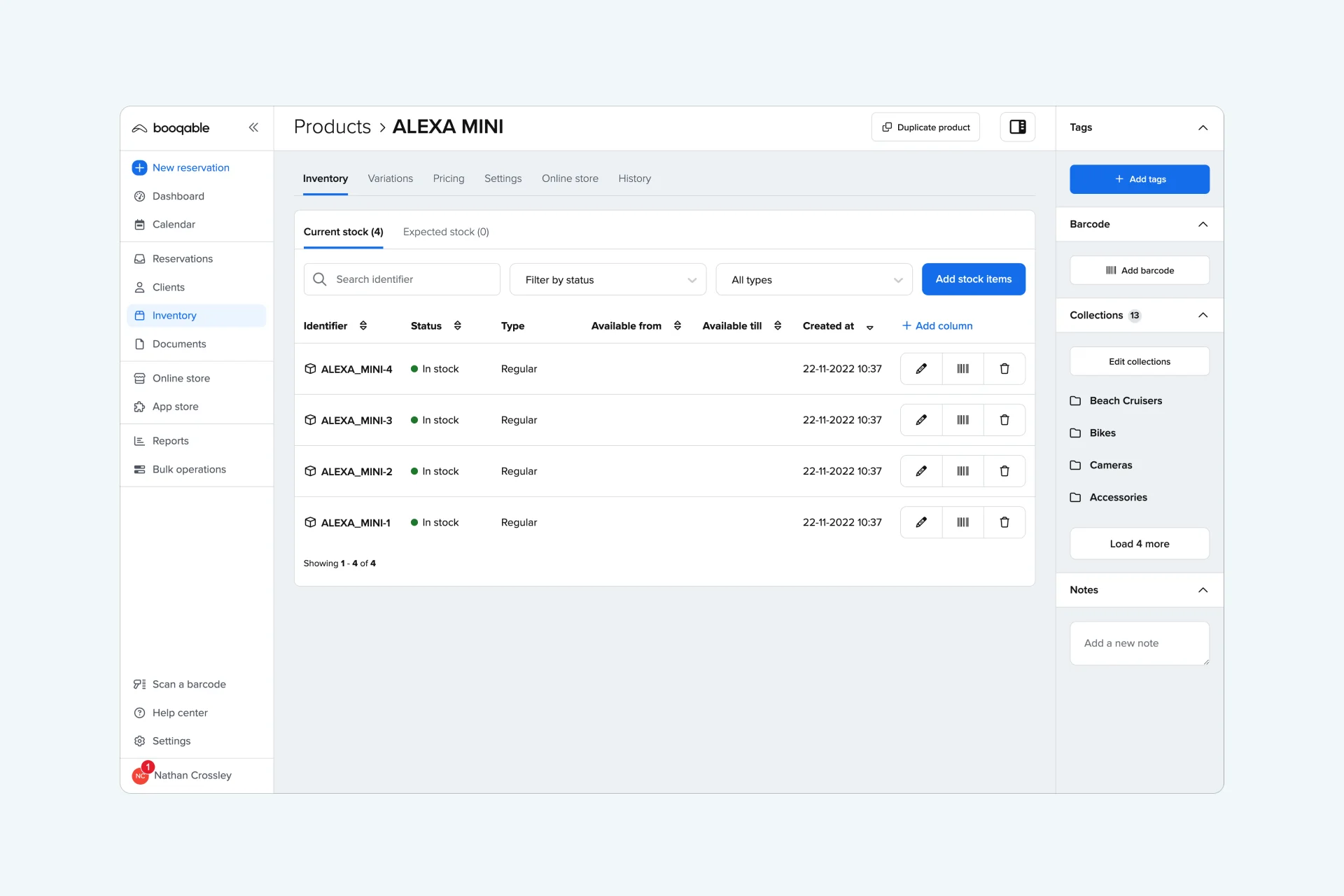
Good rental inventory management software, like Booqable, provides key features that manual systems can’t match, making it easier to track rental equipment and prevent losses.
What to look for in rental software:
- Real-time inventory updates that show what’s available right now
- Automated alerts when items are overdue
- Rental conflict warnings to prevent double bookings
- Customer history that shows who takes care of your equipment
- Online booking and payment processing to streamline transactions
Barcode scanning
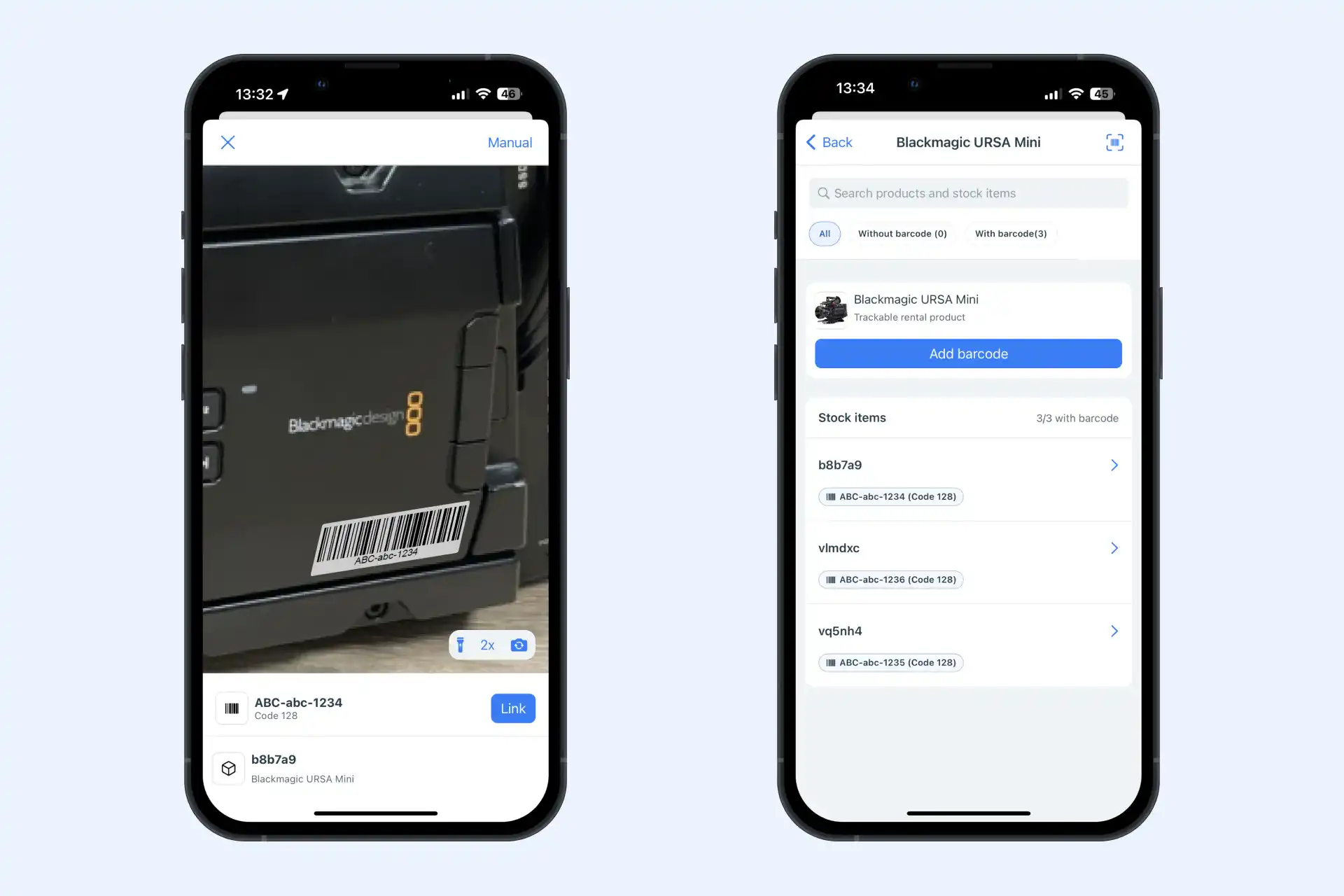
Barcode scanning drastically reduces check-in/check-out time and virtually eliminates errors and is built directly into Booqable.
Simple barcode implementation:
- Start with standard UPC barcodes ($20-30 for a basic kit)
- Print waterproof labels for each unique item
- Use your smartphone as a scanner with the Booqable mobile app
- Tag and assign barcodes to you inventory
Barcode types explained:
1D Barcodes (traditional) These are widely supported and inexpensive to print. They can only store limited information (typically just an ID number). 1D barcodes are best for basic inventory tracking when cost is a concern. Examples include UPC, Code 39, and Code 128.
2D Barcodes (QR codes, Data Matrix) These can store more information and can be scanned even if partially damaged. They require slightly more sophisticated scanners (though most smartphones work). 2D barcodes are best for storing detailed equipment information directly on the tag. Examples include QR codes, which have seen widespread use across the world in recent years.
Pro tip: Integrating barcodes with rental inventory management software provides instant status updates and streamlines your equipment check-in/check-out process.
Start working with rental periods in Booqable
Create the perfect set up for your rental website with fixed or flexible rental periods.
Start tracking your equipment inventory
Tracking rental equipment and inventory is essential for running a successful rental business, ensuring availability, reducing losses, and improving customer satisfaction. By implementing the methods outlined in this guide, you can improve your inventory management, reduce losses, and enhance customer satisfaction.
Whether you opt for simple manual methods or advanced technology, the key is to choose a solution that allows you to track rental inventory accurately and track rental equipment efficiently, scaling with your business needs. Regularly review and update your processes to ensure they remain effective as your business grows.
Pro Tip: Consider implementing a full-featured rental inventory management software like Booqable to optimize your tracking process, improve efficiency, and reduce human error.


